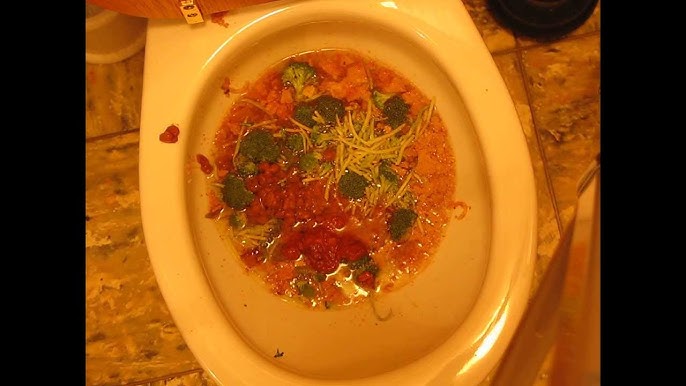Listed here further down you'll find a lot of superb data in relation to Think Twice Before Flushing Food Down Your Toilet.

Introduction
Lots of people are frequently faced with the predicament of what to do with food waste, particularly when it concerns leftovers or scraps. One common question that develops is whether it's alright to flush food down the commode. In this short article, we'll look into the reasons people may consider flushing food, the effects of doing so, and alternative approaches for proper disposal.
Reasons people may take into consideration flushing food
Lack of recognition
Some individuals might not know the potential injury caused by flushing food down the toilet. They may mistakenly believe that it's a harmless practice.
Convenience
Flushing food down the bathroom may look like a quick and simple option to taking care of unwanted scraps, particularly when there's no nearby trash bin available.
Idleness
In some cases, people might simply choose to flush food out of large negligence, without thinking about the effects of their actions.
Repercussions of flushing food down the bathroom
Ecological effect
Food waste that ends up in waterways can add to contamination and harm water environments. Additionally, the water used to purge food can stress water sources.
Plumbing problems
Purging food can result in blocked pipelines and drains pipes, creating costly pipes repair work and aggravations.
Kinds of food that ought to not be purged
Fibrous foods
Foods with coarse structures such as celery or corn husks can get entangled in pipelines and create obstructions.
Starchy foods
Starchy foods like pasta and rice can absorb water and swell, resulting in clogs in pipes.
Oils and fats
Greasy foods like bacon or cooking oils must never ever be flushed down the commode as they can strengthen and trigger clogs.
Appropriate disposal methods for food waste
Making use of a garbage disposal
For homes equipped with garbage disposals, food scraps can be ground up and flushed via the pipes system. However, not all foods are suitable for disposal in this manner.
Recycling
Certain food packaging products can be reused, minimizing waste and lessening environmental impact.
Composting
Composting is an environment-friendly way to dispose of food waste. Organic products can be composted and utilized to enrich dirt for horticulture.
The relevance of appropriate waste management
Reducing environmental damage
Correct waste management methods, such as composting and recycling, aid decrease contamination and maintain natural resources for future generations.
Safeguarding pipes systems
By avoiding the practice of flushing food down the bathroom, home owners can prevent expensive plumbing repair services and keep the honesty of their pipes systems.
Conclusion
In conclusion, while it may be tempting to flush food down the toilet for convenience, it is essential to understand the possible repercussions of this action. By adopting correct waste monitoring practices and getting rid of food waste properly, individuals can add to healthier plumbing systems and a cleaner setting for all.
FLUSH FOOD DOWN THE TOILET?
FLUSHING FOOD CAN CAUSE BLOCKED DRAINS IN YOUR HOME
All of the plumbing fixtures in your home are connected to the same sewer pipe outside of your home. This outdoor sewer pipe is responsible for transporting all the wastewater from your home to the Council sewer mains. Even small pieces of food that go down the kitchen sink can cause problems for your sewer. It should therefore be obvious that flushing larger bits of food, such as meat, risks a clog in either the toilet itself or the sewer pipes. Flushing greasy food is even more problematic because oil coagulates when it cools, coating the interior lining of your pipes.
THE TOILET IS NOT A BIN
Food isn’t the only thing that people shouldn’t be flushing down the toilet. People use the toilet to dispose of all kinds of things such as tampons, makeup wipes, dental floss, kitty litter and even underwear. Water goes to great lengths to educate residents about the high costs and stress placed on wastewater treatment systems simply from people flushing the wrong stuff down the toilet. It costs taxpayers millions of dollars each year, and homeowners thousands in blocked drain repairs.
FLUSHING FOOD IS A WASTE OF WATER
Flushing food is a waste of our most precious resource - water. In June this year Level 1 water restrictions were introduced to protect water supply from drought conditions. Much of New South Wales continues to be affected by prolonged drought with recent figures revealing up to 97 per cent of the state remains in drought. Depending on whether you have a single or dual flush toilet, every single flush uses between five and 11 litres of water. In the current climate this is a huge amount of water to be wasting on flushing food that should be placed in the bin (or better yet, the compost).
https://www.jabplumbingsolutions.com.au/blog/can-you-flush-food-down-the-toilet

I discovered that write up on Flushing Food Down the Toilet? when perusing the internet. Do you know about someone else who is excited by the topic? Why not promote it. Thanks a lot for taking the time to read it.
Call Today